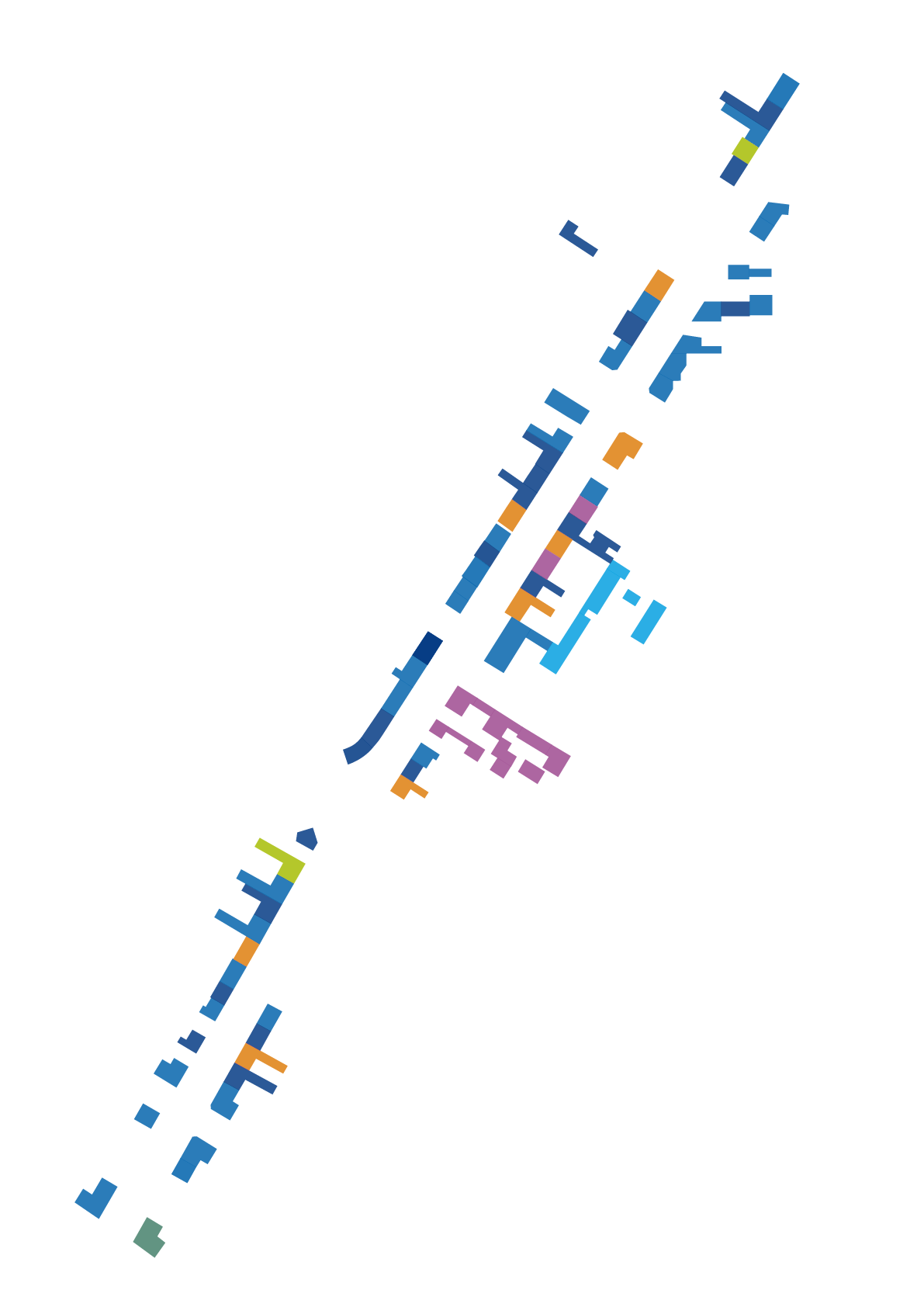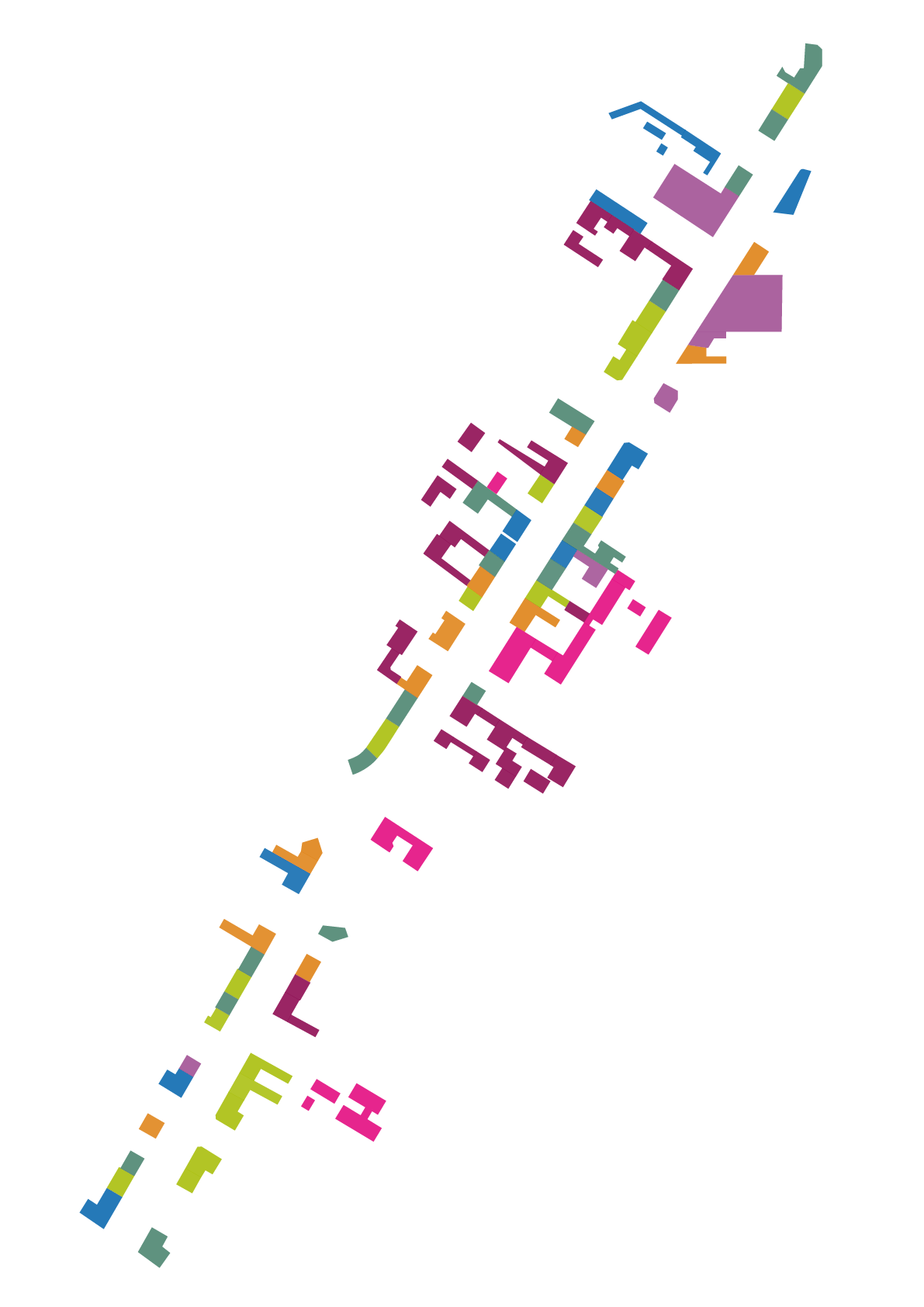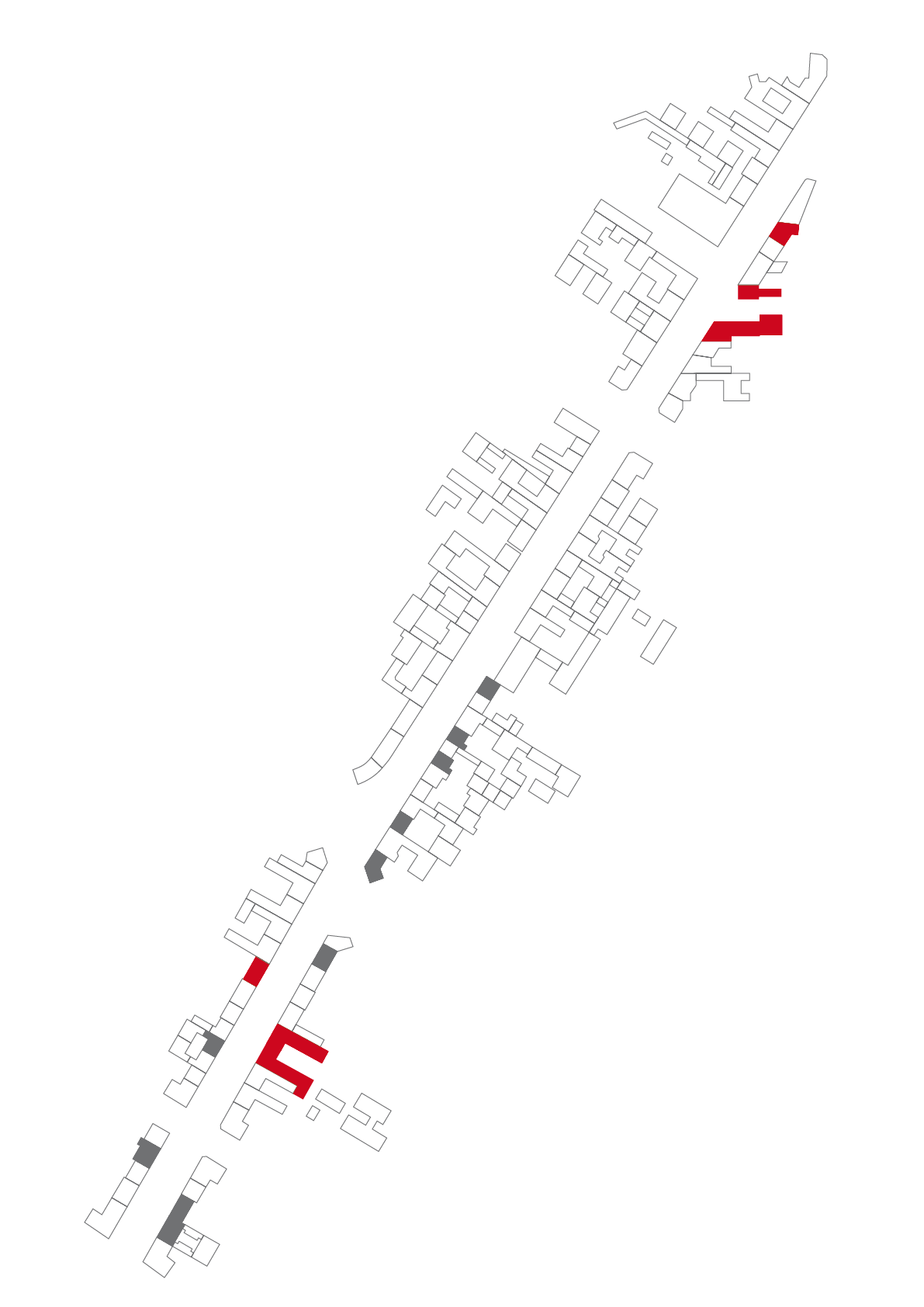Fashion & designer brands stores, cosmetics, luxury businesses
Restaurant, takeaway, cafe, bar, pub, open late kiosk
Hairdresser, florist, copy shop, stationery, IT, driving school, video store, travel agency
Household goods, clothing, haberdashery, carpets and rugs, electrical shop, coal cellar
Drugstore, supermarket, bakery, fruit & vegetables, butcher, poultry, seafood, beverages
Manufacturing and workshop
Cultural sites: cinema, theater, gallery, club, music and record store, book store
Public as well as social facilities Old stocks, outline of the plots New buildings since 1989 Not a business
Ratios
Pantea Lachin
950 Meter – La Boum, 2021
7C neon prints, decoder glasses
A cartographic analysis of the commercial history of Kastanienallee that visualizes the process of gentrification
in three layers (1: new businesses; 2: old businesses; 3: old/new buildings).
Through this exploration surfaces the effects of classist, incestuous-colonial* as well as racist profit-maximizing
exploitations of urban living and work spaces. A glance through the specialized stereoscopic glasses reveals again
what has long since disappeared or been displaced. What is today, once again, recedes behind what once was.
*Incestuous colonialism is a term coined by Lachin to describe colonization practices of privileged ruling classes towards
marginalized populations or regions in domestic territories.
Specifically, this work addresses the growing socio-economic inequality between East and West Germany, forced by
processes such as gentrification since the fall of the Berlin Wall in 1989.
Legend
Between 1957 and 2000, Kastanienallee was home to at least 80 distinct types of small businesses.
By 2021, about 30 are left and only 20 of them have been in Kastanienallee for more than 15 years, but now
they account for two-thirds of the remaining demographics.
Overall, the diversity of small businesses has shrunk by 63 percent over the past 15 years.
Homogeneity is increased by the fact that 84 percent of available spaces are now occupied only by three
types of businesses: Gastronomy (45 percent), fashion (30 percent) and open late kiosks (9 percent).
Compared to 2006, the number of both food service establishments and fashion stores has increased roughly
eightfold and the number of open late kiosks has quadrupled. Stores for daily needs, such as supermarkets
or drugstores, no longer exist at all on Kastanienallee.
Establishments completely disappeared from Kastanienallee:
Drogstore
Supermarket
Bakery
Butchery
Poultry
Seafood store
Beverage store
Flower store
Photo studio
Art supplies
Paint & varnish store
Household goods
Porcelain store
Carpet shop
Upholstery
Haberdashery store
Clothing store
Variety theater
Popular theater
Open-air cinema
Club
Music café
Undertaker
Travel agency
Cab drivers school
Pet shop
Brothel
Electrical store
Car care
Motorcycle store
Watchmaker
Roofing workshop
Chocolate factory
Secondary school
Men’s dormitory (residential establishment for homeless men)
Charity meal center
Shelter for asylum seekers



feedback click here
Many thanks to Thomas Albrecht, Rolf Gänsrich, Conrad Menzel, Lutz Penndorf and Peter who shared their memories and time with me.